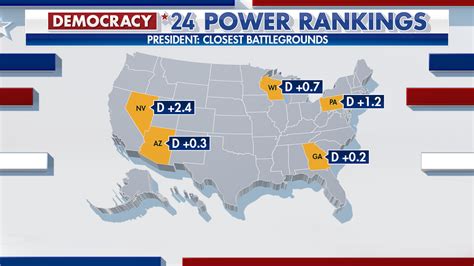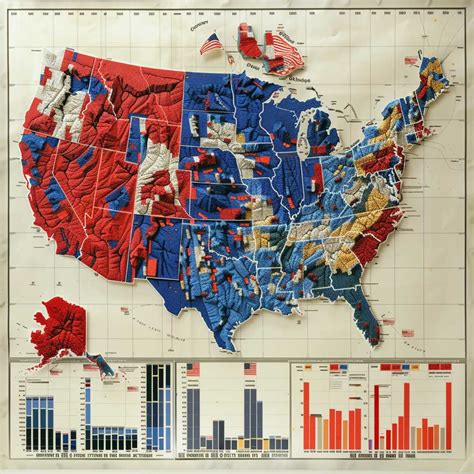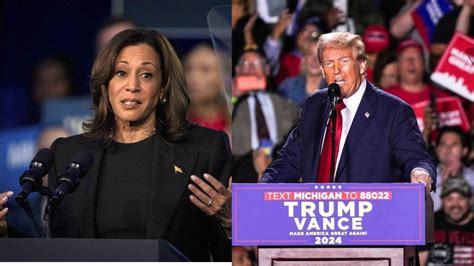Explore the significance of swing states, key players in the 2024 election, their impact on strategies, and demographic influences. Get predictions and insights here.As the 2024 election approaches, the spotlight shifts to the dynamic landscape of swing states—critical battlegrounds that can tip the balance of power in American politics. These states, characterized by their fluctuating voter preferences, are crucial for candidates seeking to secure victory in the tightly contested electoral map. In this article, we delve into the significance of swing states, identifying key regions that will play a pivotal role in shaping election outcomes. From understanding the voter demographics that influence these battlegrounds to examining the strategies candidates employ to win over undecided voters, we explore the intricate dynamics at play. Join us as we analyze predictions for swing states in the upcoming election and provide answers to frequently asked questions about their impact on the electoral process.
Understanding What Swing States Are and Why They Matter
Swing states, also known as battleground states, are pivotal in the U.S. presidential election landscape. Unlike states that are reliably Democratic or Republican, swing states can be won by either major political party in a general election. This unpredictability arises from a mix of demographic, economic, and social factors that can shift voter sentiments from one election cycle to the next.
These states hold significant power in determining the outcome of presidential elections. Since the United States uses the Electoral College system, where each state is allocated a certain number of electoral votes based on its population, swing states often become the focal points of campaign strategies. Political candidates tailor their messages and focus their resources on these areas, understanding that winning swing states can be the key to securing the presidency.
Moreover, the influence of swing states extends beyond just numbers. They reflect broader national trends and can serve as indicators of changing political landscapes. For instance, shifts in voter demographics, such as increasing diversity or changing economic conditions, can have profound impacts on which party gains an advantage in these states.
| Characteristics of Swing States | Significance |
|---|---|
| Unpredictable Voting Patterns | Can swing in favor of either party during elections |
| Demographic Diversity | Reflect changing population and political sentiments |
| Target for Campaigns | Attract significant attention and resources from candidates |
Understanding the concept of swing states and their importance is crucial for predicting electoral outcomes and analyzing the overall political climate leading up to the 2024 election. Candidates who effectively engage with these states may have a distinct advantage, making it essential for voters and analysts alike to monitor their dynamics closely.
Identifying Key Swing States for the 2024 Election
As we approach the 2024 election, Swing States: will play a crucial role in determining the outcome. These are battleground areas where no single political party holds a significant advantage. Identifying which states are considered key Swing States: is essential for campaigns as they allocate resources and tailor their strategies. Here’s a closer look at some of the most pivotal Swing States: to watch in the upcoming election:
- Pennsylvania: A historical swing state, Pennsylvania has a diverse population that can sway the results in either direction.
- Wisconsin: Known for its narrow margins in past elections, Wisconsin remains a critical battleground.
- Michigan: With its industrial roots and shifting demographics, Michigan is a state that both parties will focus on heavily.
- Arizona: Historically a Republican stronghold, Arizona has been increasingly competitive, making it a key player in the Swing States: roster.
- Georgia: Emerging as a critical Swing State: in recent elections, Georgia’s changing voter demographics could significantly impact the race.
- North Carolina: A state that has seen close races in the past, North Carolina continues to be a significant target for both parties.
- Florida: Often considered the ultimate battleground state, Florida’s diverse population makes it a crucial component of any campaign strategy.
Monitoring these Swing States: will be essential as election day approaches, with each candidate strategizing to secure as many votes as possible in these unpredictable areas. Understanding the unique issues and voter sentiments in these key states will be vital for any successful campaign effort in 2024.
The Impact of Swing States on Election Strategies
Swing states, by their inherent nature, play a crucial role in shaping the strategies of campaigns during elections. The unpredictable voting patterns in these states compel candidates to invest significant time and resources, understanding their unique demographics and concerns.
One of the primary ways swing states impact election strategies is through targeted campaigning. Candidates often tailor their messages to resonate with the voters in these states. This could involve emphasizing certain policies that align with local interests or addressing specific economic issues that are pertinent to the region. For instance, a candidate might focus on agricultural policies in a state with a strong farming community, while addressing urban development in another that is more metropolitan.
Additionally, swing states often witness a higher frequency of campaign visits and advertisements. Candidates may host rallies, town halls, and other engagement events to connect with the electorate directly. The more competitive a swing state is perceived to be, the more attention candidates will devote to it, reflecting its critical status in the overall electoral map.
Moreover, the voter demographic dynamics in these states can lead to revised outreach strategies. For example, if a swing state shows an increase in younger voters or a particular ethnic group, campaigns may adjust their platforms and communication channels to effectively reach and mobilize these key demographics. Digital advertising and social media outreach can take precedence, especially when engaging younger voters.
The analysis of polling data and voter sentiment in swing states leads to strategic decision-making regarding resource allocation. Campaigns track voter preferences closely, often shifting their focus to respond to changing opinions or emerging issues within these critical battlegrounds. This adaptive strategy is essential for securing the electoral votes needed to win the presidency.
How Voter Demographics Influence Swing States
Voter demographics play a crucial role in shaping the landscape of Swing States: and influencing election outcomes. These states often exhibit a diverse population with varying interests, economic backgrounds, and cultural influences, which can impact which party garnering support during an election.
Several demographic factors can sway the political balance in Swing States:
| Demographic Factor | Impact on Voting Behavior |
|---|---|
| Age | Younger voters tend to lean Democratic, while older voters often support Republicans. |
| Education | Higher education levels correlate with increased support for Democratic candidates. |
| Race and Ethnicity | Minority populations typically align more with Democratic values, affecting Swing States: with diverse demographics. |
| Income | Lower-income voters may be drawn to Democratic policies regarding social programs, while higher-income voters may prefer Republican tax strategies. |
| Urban vs. Rural | Urban areas tend to be more liberal, while rural areas may lean conservative, creating stark contrasts within Swing States:. |
Political campaigns in Swing States: must consider these demographics to effectively tailor their messaging and outreach efforts. Strategies that resonate with the specific needs and concerns of different voter groups can significantly enhance a candidate’s chances of success. Understanding demographic trends not only aids in direct voter engagement but also helps predict shifting allegiances, making it an essential element of election strategies leading up to the 2024 election.
Predictions for Swing States in the Upcoming Election
As we approach the 2024 election, the focus on Swing States: becomes increasingly crucial for candidates and their campaigns. Analyzing recent polling data, voter trends, and demographic shifts will play a vital role in understanding how these battlegrounds might play out during the election.
Based on current insights, we can anticipate several key states to maintain their status as pivotal Swing States: in 2024. States like Wisconsin, Pennsylvania, and Michigan, which were instrumental in the past election cycles, have shown mixed signals in polls, suggesting that they will once again be fiercely contested.
Additionally, states such as Georgia and Arizona, which have recently leaned more toward Democratic candidates, could potentially swing back, creating uncertainty in their electoral outcomes. The importance of voter turnout in these states cannot be overstated; target campaigns, grassroots movements, and innovative outreach strategies will be essential in mobilizing voters effectively.
Electoral predictions must also consider the influence of independent voters, who can significantly tip the balance in Swing States: The engagement of this demographic will be crucial in shaping the election’s results. Furthermore, issues such as the economy, healthcare, and social justice are likely to resonate deeply with voters, affecting their final decisions.
While we can make educated predictions about the role of Swing States: in the upcoming election, the dynamic nature of voter sentiment and changing political landscapes will require continual analysis and engagement from all parties involved. The battlegrounds are set, and the stakes are high as we look ahead to November 2024.
Frequently Asked Questions
What are swing states?
Swing states are those states in the U.S. where both Democratic and Republican parties have similar levels of support among voters, making them critical in determining the outcome of elections.
Why are swing states important in the 2024 election?
Swing states are important in the 2024 election because they can decisively influence the overall results, as winning these states may propel a candidate to victory in the Electoral College.
Which states are currently considered swing states for the 2024 election?
As of now, states like Pennsylvania, Wisconsin, Michigan, Arizona, and Georgia are widely considered swing states for the 2024 election.
How do demographic changes affect swing states?
Demographic changes, such as shifts in population diversity, age, and education levels, can significantly affect voting patterns in swing states, altering which party may have an advantage.
What role do polls play in understanding swing states?
Polls provide insights into voter preferences and trends in swing states, helping campaigns tailor their strategies and resource allocation as the election approaches.
How can local issues impact the dynamics in swing states?
Local issues, such as economic conditions, healthcare, and education, can heavily influence voter sentiment in swing states, often swaying undecided voters and impacting election results.
What strategies do candidates use to win swing states?
Candidates often engage in targeted campaigning, including town halls, advertisements, and grassroots efforts, focusing on the specific needs and concerns of voters in swing states.









